Fink Team KIM Standmount Loudspeaker Review
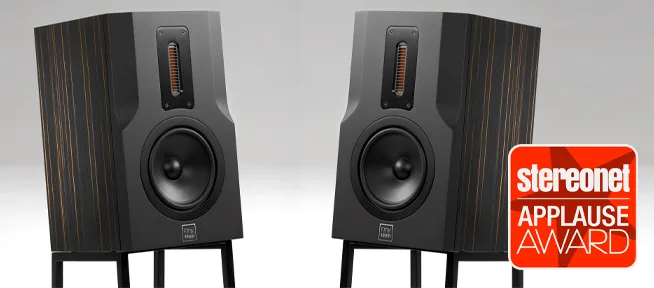
David Price auditions a distinctively different high-end loudspeaker with illustrious provenance…
Fink Team
KIM Standmount Loudspeaker
£9,800 (Standard Finish)
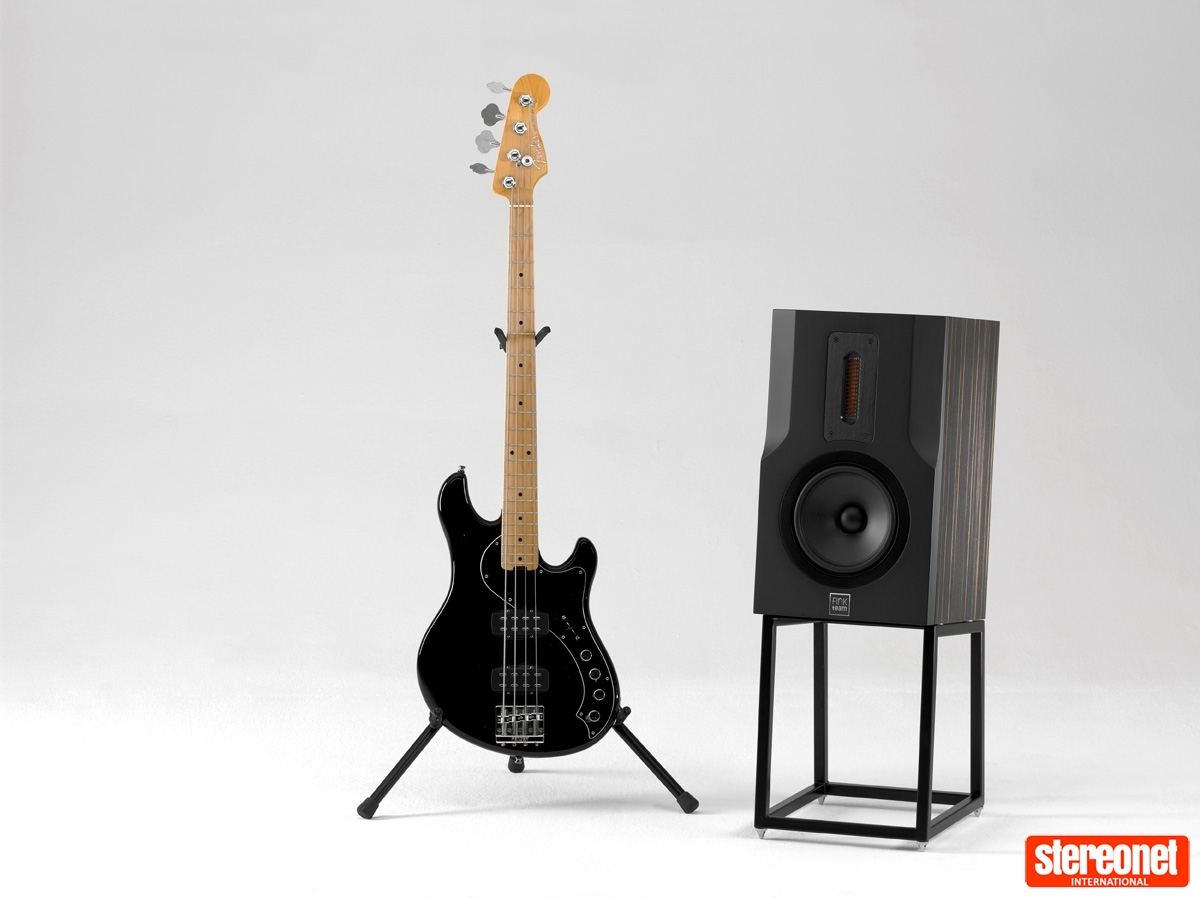
I liken Karl-Heinz Fink to the music producer Trevor Horn. Throughout much of the nineteen eighties and nineties, "clever Trevor" delivered countless hit records for artists from Frankie Goes to Hollywood to Seal and Robbie Williams. And he didn't just twiddle a few knobs on the mixing desk; he famously took the songs apart and put them back together again as only he could.
Karl-Heinz Fink has played a similar role in the hi-fi world. He's been designing loudspeakers for countless manufacturers since 1986. Much of his work has been covered by non-disclosure agreements, but suffice to say that many award-winning speakers were much more his creations than they were the manufacturer's. Better still, they all have a distinctive sound which I would characterise as dry, clean and musical with a subtly warm tonality. Nothing that Karl-Heinz puts out has any significant vices, which is quite an achievement at the affordable end of the market.
Horn only went into song production after scoring a massive hit with Video Killed the Radio star. This number one record went on to launch the music cable television network MTV. This he did with his band, The Buggles, alongside accomplice Geoff Downes. On the other hand, Karl-Heinz decided to have his solo career after his 'hi-fi hits', so to speak. FinkTeam, launched five years ago, is the name of his company – and does what it says on the tin.
I've been to his headquarters in Essen, Germany, several times and been amazed by the design and engineering resources he has available. Cleaner than most hospitals, the large building is stuffed with computers, anechoic chambers and various bespoke-designed drive units – so it is quite a thing to see. But Karl-Heinz is a hobbyist at heart, and up top in the attic is a wide selection of classic turntables and all sorts of other high-end goodies. It was up here that I spent some fascinating hours with him and his close friend Ken Ishiwata, ten or so years ago, listening to various prototype loudspeakers that seemed too crazy to be made with a commercial client in mind.

Martin Klaassen (L), Karl-Heinz Fink (M), Ken Ishiwata (R)
Sadly Ken passed away in 2019, but the pair of them seemed almost inseparable beforehand. Indeed I suspect that, had things gone another way, he might even have been part of FinkTeam. Obviously, things did not, and Karl-Heinz carried on. The first speaker he launched was the vast WM4, followed by the more sane Borg, which is still seriously big. The third model is the KIM that you see here, half the price of its bigger brother. As Star Trek fans will doubtless know, both it and the BORG are named after characters in this classic science fiction show.
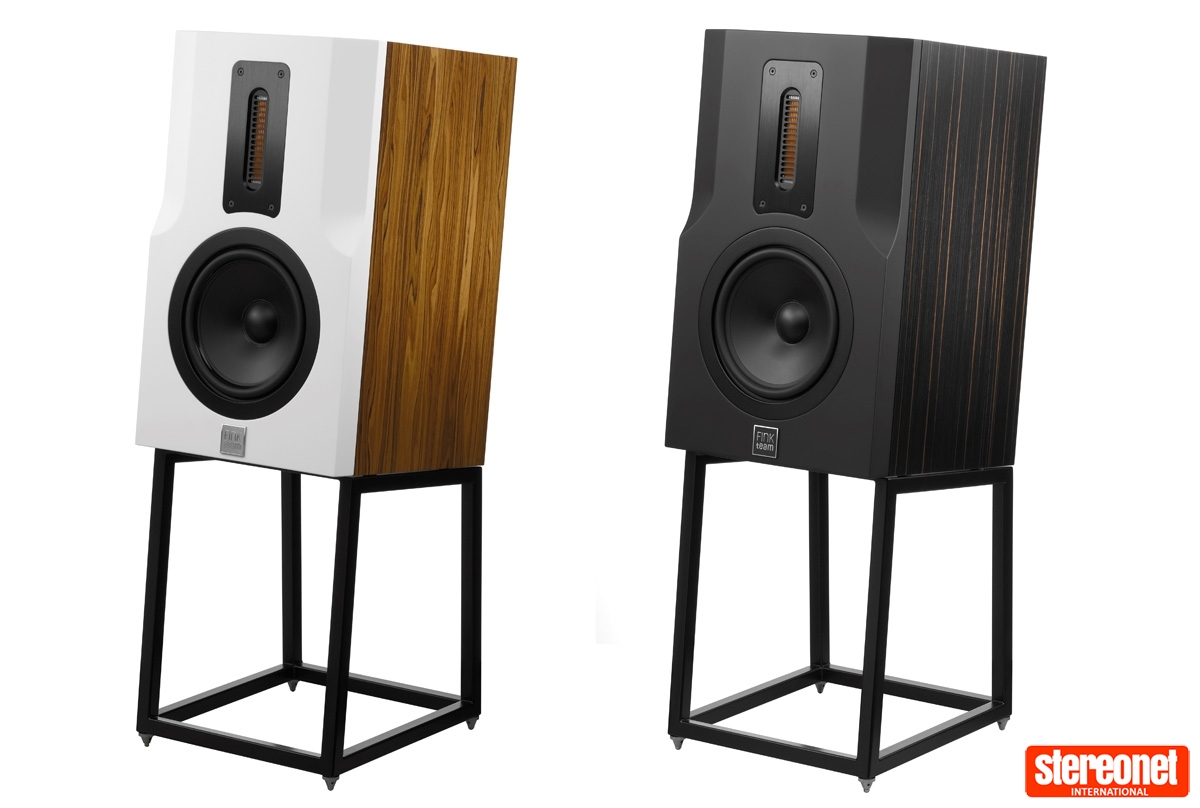
UP CLOSE
Whereas Borg was the company's statement design, Karl-Heinz says that KIM is a speaker that he would use himself for fun.
I wanted to have something that is not too high, so it will hide itself within the rest of the room, without being a prominent statement. It's the opposite of a singing brown stick, with its eight inch woofer and wide baffle. Some years ago, we worked on a speaker for one of our customers which was an old school design, and I really liked it a lot…
The KIM is a 2-way standmounter that comes with an integral box steel frame stand, which looks like it's escaped from the nineteen-eighties. I'm not saying the design is ugly, but it's certainly not the height of fashion in 2021. Yet this light stand, each of its four corners positioned at the extremity of the speaker's cabinet bottom, is the ideal way to do it in engineering terms, as it gets the box a good distance off the floor, and holds it steady pointing upwards at an angle of five degrees.
"I designed this speaker with an integral stand because it works best", Karl-Heinz told me.
We wanted something that was stable and had a minimum of surfaces to radiate. The stand is connected at the side panels and you have very little contact area between it and the speaker. It is a nightmare to make, and there are no 90-degree angles on this beast – and if you don't weld it the right way, the stand does not go onto the cabinet! We tried many manufacturers and finally found one in East-Germany with the skills we needed.
__large_full.jpg)
The cabinet design itself is hardly mainstream, either. Reminiscent of a mid-size, nineteen seventies standmounter, its front baffle is way wider than is the norm now. It has a 200mm mid/bass driver that's able to move a good amount of air around the room without having to call for backup – unlike many tower floorstanders with their multiple 125mm drivers. "The design was done by Kieron Dunk, its form following function", he tells me. "Our speakers are not typical lifestyle speakers, but KIM has been well received, because it's so easy to integrate into all sorts of rooms."
To reduce reflections, the cabinet's upper front baffle is sculpted rearwards either side of the 110mm AMT high-frequency unit. "We wanted an enclosure large enough to deliver realistic low frequencies and scale, but was small enough to be relatively discreet", says Karl-Heinz. "It had to be low enough to sit below windows and work well close to walls." Measuring 854x300x310mm and weighing 25.1kg apiece, you don't see many modern speakers that look like this. A slotted reflex port, tuned to 37Hz, is fitted to the rear, with an additional resonator in anti-phase that Karl-Heinz calls a 'CleanPort' fitted to remove its pipe resonance.
The sculpting on the 300mm wide front baffle effectively reduces its width to 205mm, as far as the tweeter is concerned, says Fink. This helps its directivity and reduces diffraction. The baffle itself is made from multiple layers of MDF panels glued together, which is CNC cut; the rear and sides of the box are made in a similar way, although the walls are a single sandwich as opposed to multilayer. Two strengthening braces run from one side of the cabinet to the other, inside, to make the whole assembly more rigid, but Karl-Heinz has deliberately eschewed thick internal panels because of the resonances they trap. A relatively small amount of damping material is used inside, to keep the speaker's time-domain performance as good as possible, he says. Helmholtz resonators are fitted to get rid of most standing waves.
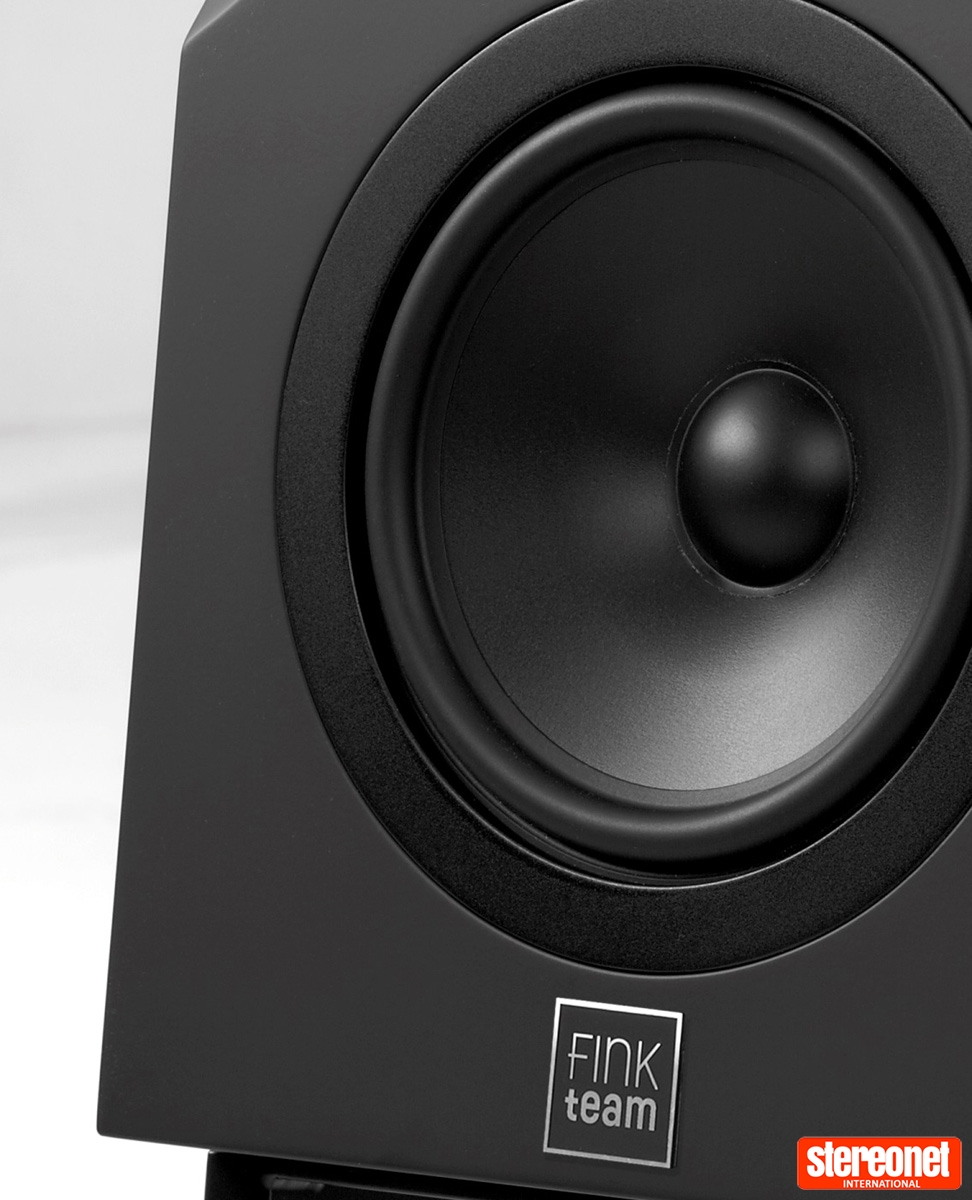
The tweeter is an Air Motion Transformer (AMT) type, developed by Mundorf together with FinkTeam. It has a 25μm-thick pleated Kapton diaphragm with 50μm aluminium strips. "It isn't lighter overall," explains Karl-Heinz, "but it has a far greater moving area compared to a smallish dome tweeter. Mass is not a problem as long as you have the right motor behind it." The result is a tweeter that's said to have very low distortion and wide horizontal dispersion. Vertical directivity has been tailored to reduce ceiling reflections.
The single 200mm mid/bass driver has a sizeable, soft rubber half-roll surround to allow large excursion, and an oversized magnet is fitted. "For a double woofer speaker," Karl-Heinz tells me, "you need a 'tall boy' shaped cabinet with all the problems of possible asymmetric load of the drivers and standing wave modes. What I like on larger drivers is the relation between cone area and surround area. The surround is pretty nonlinear in many ways, shows hysteresis and with a larger driver you get a better balance between cone area and surround."
He continues:
We used paper for the cone, a highly flexible material that sounds very good. In many years of FEM simulations and laser scanning, I learned that you need to find the right shape for the material you are using. If you know how that works, you can make a good cone out of nearly anything. Most so-called 'high tech cones' are made for marketing, and these super-light, super-stiff types are not a good compromise. It's the balance that makes a good cone, and paper works very well.
The KIM's two drivers are divided up at 2.2kHz by a 4th order acoustic Linkwitz-Riley type single-wire crossover, "with an all-pass delay for the HF unit and some simple impedance compensation at the low end to make it easier to drive", says Karl-Heinz. The inductors are zero distortion air-core designs, with polypropylene film capacitors also chosen from Mundorf. Resistors are a combination of Mundorf low inductance and Bifilar types.
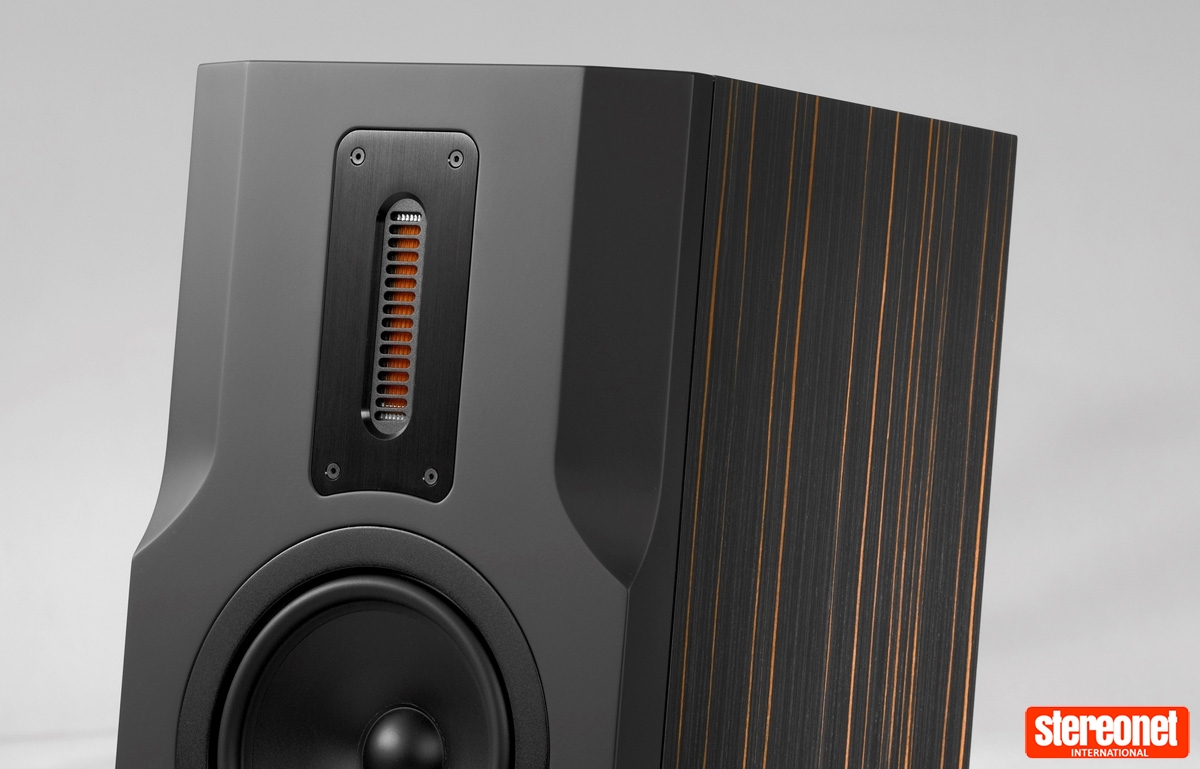
This makes for a quoted sensitivity figure of 86dB, which is so-so for a speaker of this size, and a claimed minimum impedance of 5.9 ohms and a nominal figure of 8 ohms, which makes it relatively easy to drive. Claimed frequency response is 35Hz-25kHz (-10dB). Two-level controls are located beside the rear speaker terminals. One is a simple treble trimmer to reduce the tweeter level, while the other is a three-position bass damping control to help tune the KIM to the output impedance of the attached amplifier.
Apropos of this, Karl-Heinz explains that: "When I was working on a high-end floorstander, I found that the inductor on the woofer crossover made distortion that I could measure. So we changed to an air-core with thick wire. This was no problem on the floorstander, but the next model we did was a bookshelf and so there was no space for a larger coil. I was running some simulations and found that I could modify the parameters of the speaker in the box with the magnet system and a higher resistance air coil. Yeah, school knowledge is that the inductor should have low resistance, but that's not true. If you know what to do with your alignment, you can use small inductors and get good bass."
Karl-Heinz then tried using a higher resistance inductor and another resistor in series to change the speaker's alignment even more. "We can switch between 0.5 ohm, 0.25 ohm, and nothing, so this can be used to tailor your speaker to different amplifier technologies. A modern transistor amp has a high damping factor, so you use the larger resistor setting, while more traditional amplifiers like Naim normally use a smaller resistor in series, so the middle position is correct. And the left option is for tube amps; this works well with push-pull designs and helps with the bass."
I found the KIM to be unusually easy to position in my room. Standing about 30cm out from the boundary wall on its 6mm carpet-piercing spikes doing their thing, it integrated very well and didn't boom in the bass unduly. I alternated between the high damping factor and middle positions as I switched between my Rotel Michi X-5 and Exposure 3510 amplifiers, fed from a Chord Electronics Hugo TT2 DAC.
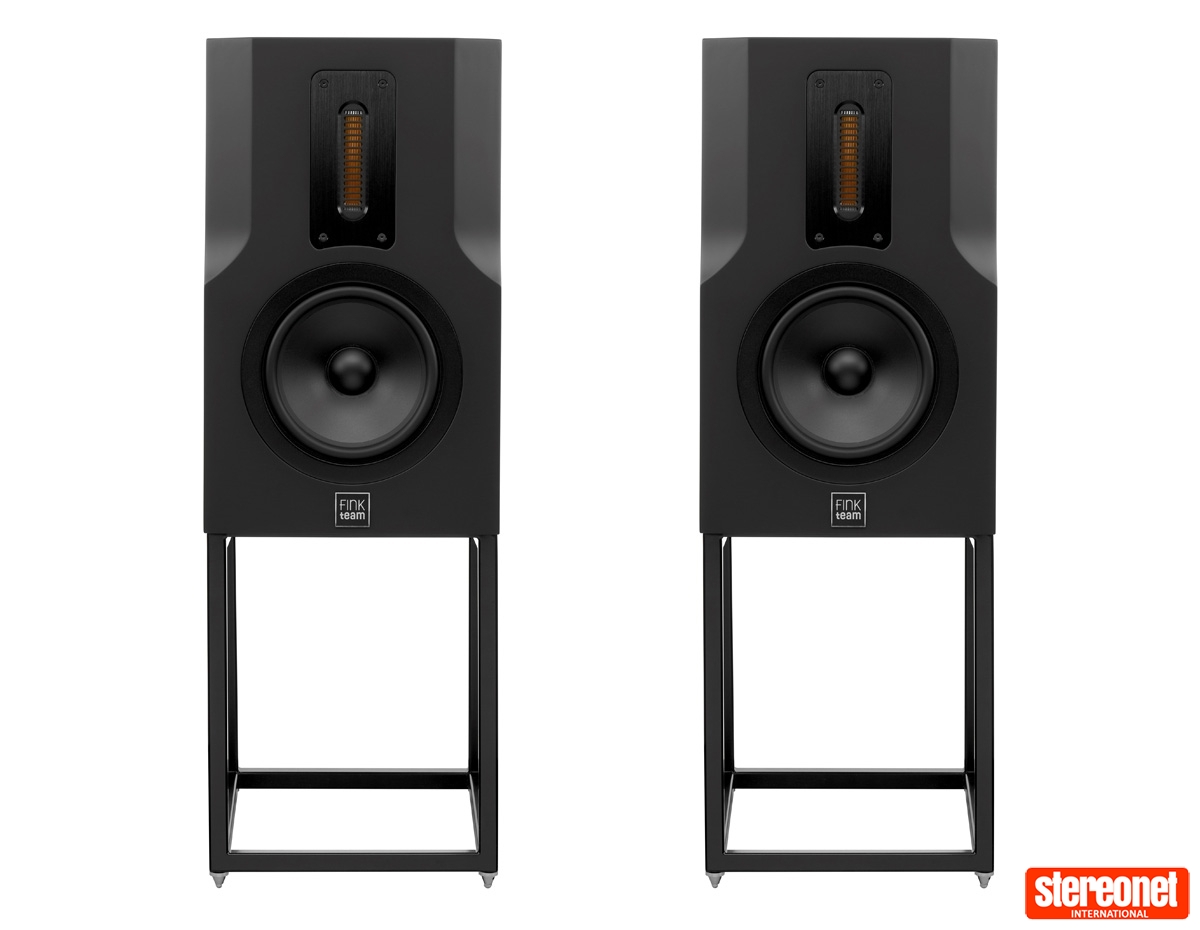
THE LISTENING
A very interesting speaker to listen to, one with several great qualities and few obvious weaknesses! It is perhaps easiest to describe the KIM in terms of what it doesn't sound like, which is most middle-of-the-road floorstanders. You're immediately aware that it lacks the bass extension and/or power of floorstanding designs of a similar height, but that's no surprise because it's down by lots of litres in the internal cabinet volume stakes. Yet the upside is that it has a more musically articulate and tuneful bass than you might expect; what it lacks in quantity, it makes up for in quality.
This then feeds into the clean and slightly tonally dry midband, one that's distinctively Karl-Heinz in its sound – many of his speakers seem to have this sonic fingerprint, so to speak. Yet that's not to say the midband isn't fulfilling, quite the reverse; it merges very tidily with the bass and treble to give a speaker that sounds almost 'electrostatic' in its evenness. It also means you can put on wildly differing recordings and get quite contrasting sounds from the KIM. Better still, the midband is also decently rhythmic – which I suspect has much to do with the transient speed of the tweeter, which encroaches quite far down into this 'presence' region.
Further up top, the aforementioned treble transducer gives a very delicate, polished sound, one that's clearly more sophisticated than even the diamond dome tweeter in B&W's similarly priced 804 D4 that I had on hand for comparisons. The downside is that the KIM doesn't quite have the bite and articulation of the latter, but there's no criticising its subtlety and detail. Together, the bass, midband and treble combine to deliver an excellent sound that is totally competitive with rival products at this price.
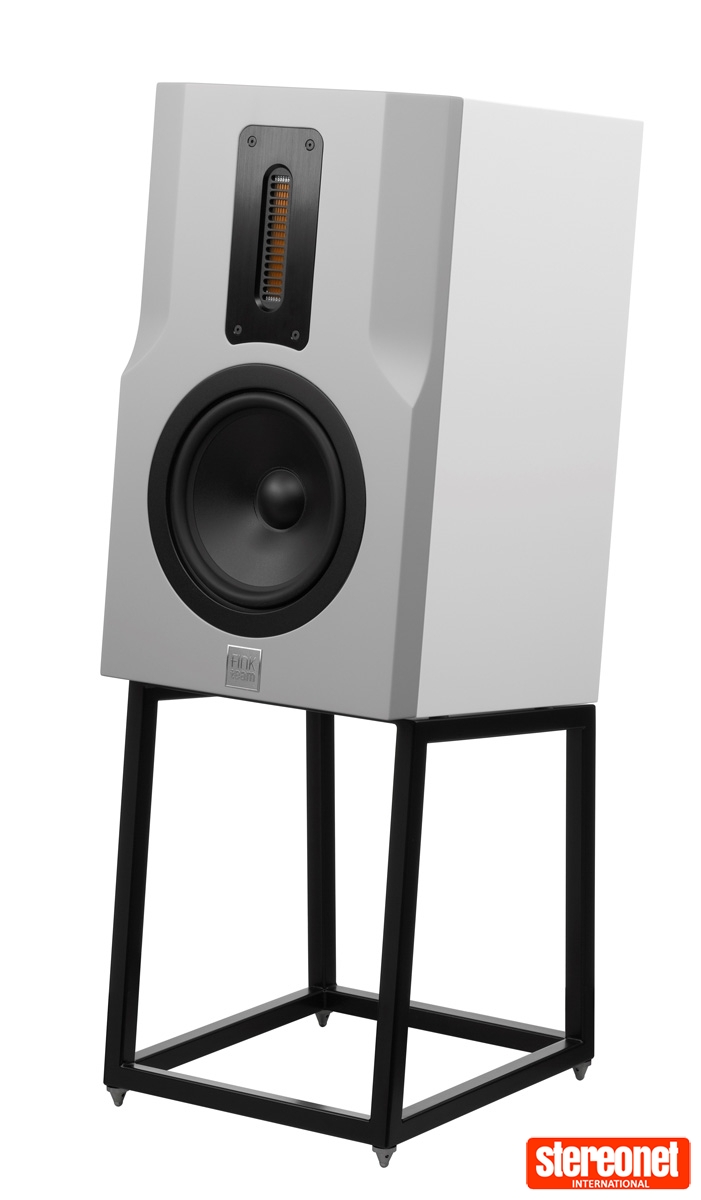
Starting with the bottom end, and I found myself enjoying it very much when playing Riders on the Storm by The Doors. This old late sixties classic has a distinctive walking bassline that's either made or broken by the speakers reproducing it. The KIM did extremely well, sounding supple and fast, with a real sense of bounce to the proceedings. If the truth be told, there's a slight softness to this speaker's low end; it doesn't have the vice-like grip of some rivals, and nothing I could do to tune it fully eradicated it in my room. Although, to be fair, my room is a tad on the boomy side, which doesn't help. Still, it was a pleasure to hear; this speaker sounds less constrained at high levels than you'd expect from a fairly compact standmounter and really rocked.
The KIM also proved neutral enough to give a super-clean reading of this track through the midband. This is surely down to the drive unit integration, the quality of the tweeter and of course, the rigidity of the loudspeaker cabinet itself. Indeed it has real insight, which gets an awful lot out of any recording you care to play. I cued up ABBA's Eagle, a truly badly recorded track that was processed to hell back in the late seventies when it was laid down. Some high-end speakers want to tell me all about how poor the recording is, but not this one. Instead, it really got into the swing of things. I found that I could listen in to the mix and pick out a lot of filigree detail that's often masked by lesser designs, yet the KIM didn't get too analytical. I loved the texture of the vocal harmonies and those characteristically soft-sounding early analogue synthesisers.
This all integrates very well into what is a really classy treble; it's top-notch stuff. One listen to the sound of hi-hat and ride cymbals on World of Twist's The Lights was enough to remind me that dome tweeters aren't the be-all-and-end-all of high frequencies. There was a lovely silkiness to the sound, allied to great delicacy that's rare to hear from any hi-fi loudspeaker. This was further allied to a great sense of air and space to the recorded acoustic. Despite this being a humble, early nineties indie-pop production, it sounded positively ethereal.
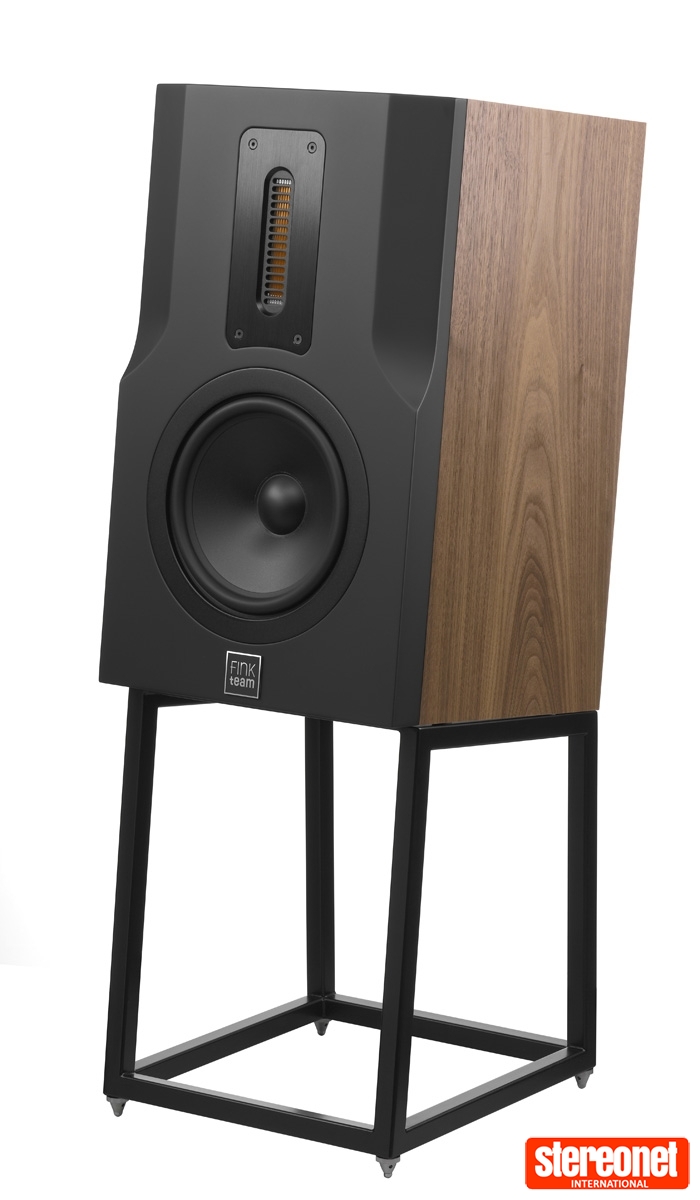
The enjoyment was all the more marked because everything arrived in perfect time. I'm a huge fan of good 3-way speakers, but there's no arguing with a really well done 2-way like this. It sounds all-of-a-piece, almost like it's a single (very) full-range design, such is the coherence between the bass and treble. The Stranglers' excellent late seventies cover of Walk On By was exhilarating; this is another low rent recording that came alive under the stewardship of the KIM. The driving bassline was beautifully syncopated with the drum work, and the vocal phrasing was a joy. The result was a really commanding sound, enthralling even.
The KIM doesn't seem to have got the memo that small speakers shouldn't have visceral fun, then. Interestingly, although it's a great music maker, it is never less than totally couth at all times – think of it as a house-trained headbanger. It proved able to rock out to the raucous strains of Rush's classic Fly By Night, whilst sounding consummately civil when playing the chiming, sophisticated eighties soul of Anita Baker's Sweet Love. With the latter, I felt like I was back in the smoky Shibuya jazz bar – in Tokyo, 1990 – where I first heard this smoocher of a song.
Overall, the KIM boasts the unusual combination of great detail and insight, plus an obviously musical character. Often speakers sound insightful or fun but rarely do the twain properly meet. This made it a fascinating contrast to the aforementioned, similarly priced B&W 804 D4, which was more of a jack of all trades. It was eminently capable at everything and outpointed the FinkTeam speaker in terms of dynamic attack and out-and-out power – it could thump you harder in the chest, going louder more easily. Methinks this is at least partly down to its greater physical size, yet oddly the Bowers speaker still proved less fun to listen to, overall. There's something about this little box that loves to get the joint jumping.
The KIM also has very decent soundstaging, and proved a joy with classical music. An old favourite Deutsche Grammophon recording of Beethoven's Fifth Symphony [Karajan, Berlin Philharmonic] was a lovely listen. It didn't have the great physical scale of larger floorstanders like the B&W, but it makes up for this with its pinpoint image precision and impressively good stage depth. The result was a well-ordered sound that allowed me to peer deep into the recording venue. A very slight touch of bass warmth didn't detract from an accomplished rendition of this fine recording, one which was delightfully three dimensional.
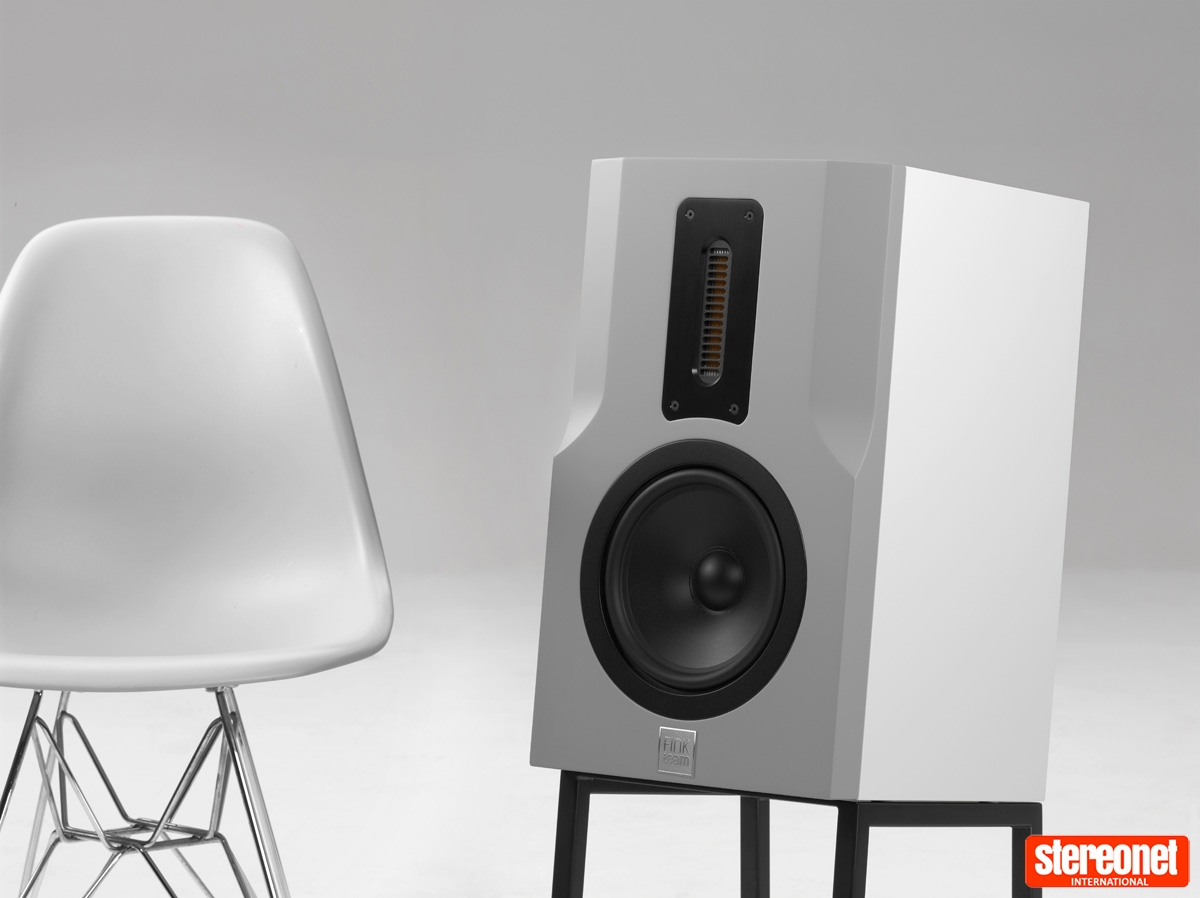
THE VERDICT
 I can see a lot of people liking this loudspeaker. It's an unashamedly old-school standmounter that gives a big-hearted and engaging sound from a relatively compact package. Highly detailed yet never not fun to listen to; it has plenty of character yet doesn't editorialise very much. The KIM is undoubtedly distinctive in the great scheme of high-end speaker things, with a charm of its very own. It's capable enough to take on larger floorstanders of a similar or higher price and still come away looking good. Overall, if you're in the market for such a thing, this is an essential audition.
I can see a lot of people liking this loudspeaker. It's an unashamedly old-school standmounter that gives a big-hearted and engaging sound from a relatively compact package. Highly detailed yet never not fun to listen to; it has plenty of character yet doesn't editorialise very much. The KIM is undoubtedly distinctive in the great scheme of high-end speaker things, with a charm of its very own. It's capable enough to take on larger floorstanders of a similar or higher price and still come away looking good. Overall, if you're in the market for such a thing, this is an essential audition.
So Karl-Heinz Fink's new 'solo' career is looking very interesting then, as he turns out another hit loudspeaker that will surely soar up the high-end hi-fi charts. Meanwhile, he's still thinking of his old sparring partner Ken Ishiwata, telling me that "KIM was voiced after he passed away, but in a way he was always around – and still is."
For more information visit Fink Team
David Price
David started his career in 1993 writing for Hi-Fi World and went on to edit the magazine for nearly a decade. He was then made Editor of Hi-Fi Choice and continued to freelance for it and Hi-Fi News until becoming StereoNET’s Editor-in-Chief.
Posted in: Applause Awards | 2021 | Loudspeakers | Bookshelf / Standmount | Hi-Fi
JOIN IN THE DISCUSSION
Want to share your opinion or get advice from other enthusiasts? Then head into the Message
Forums where thousands of other enthusiasts are communicating on a daily basis.
CLICK HERE FOR FREE MEMBERSHIP
Trending
applause awards
Each time StereoNET reviews a product, it is considered for an Applause Award. Winning one marks it out as a design of great quality and distinction – a special product in its class, on the grounds of either performance, value for money, or usually both.
Applause Awards are personally issued by StereoNET’s global Editor-in-Chief, David Price – who has over three decades of experience reviewing hi-fi products at the highest level – after consulting with our senior editorial team. They are not automatically given with all reviews, nor can manufacturers purchase them.
The StereoNET editorial team includes some of the world’s most experienced and respected hi-fi journalists with a vast wealth of knowledge. Some have edited popular English language hi-fi magazines, and others have been senior contributors to famous audio journals stretching back to the late 1970s. And we also employ professional IT and home theatre specialists who work at the cutting edge of today’s technology.
We believe that no other online hi-fi and home cinema resource offers such expert knowledge, so when StereoNET gives an Applause Award, it is a trustworthy hallmark of quality. Receiving such an award is the prerequisite to becoming eligible for our annual Product of the Year awards, awarded only to the finest designs in their respective categories. Buyers of hi-fi, home cinema, and headphones can be sure that a StereoNET Applause Award winner is worthy of your most serious attention.





